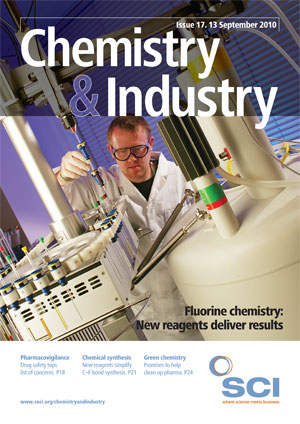The sequencing of the human genome 10 years ago was heralded as the start of a new era of medicine in which genetic diseases would be conquered. Emma Dorey examines what has happened to this revolution
Ten years after the human genome was sequenced, teasing out the genetics of complex diseases still seems frustratingly slow. With relatively few medical products resulting from the first deluge of genomewide association studies, some researchers say the focus of such research must switch from genetic markers commonly found in healthy people to those with specific disease subtypes, if further progress is to be made.
In July 2010, researchers at Boston University, US, said they had found a way of determining whether someone will live beyond 100. To explore the genetic contribution of ageing, they conducted a genome-wide association study (GWAS) of exceptional longevity in 1055 centenarians and 1267 regular people. By comparing the genomes of the two groups, the researchers identified 150 key genetic variants (SNPs), which they then incorporated into a model that could predict with 77% accuracy whether someone would be a centenarian (C&I 2010, 13, 9). The researchers also found that 90% of the centenarians had one of 19 genetic signatures for long life that correlated with differences in the prevalence and the start of onset of age-associated diseases (ScienceXpress, doi: 10.1126/science.1190532).
‘These genetic signatures are a new advance towards personalised genomics and predictive medicine, where this analytic method may prove to be generally useful in prevention and screening of numerous diseases,’ said one of the researchers, Thomas Perls, director of the New England Centenarian Study.
The findings were initially hailed as a breakthrough in understanding the role of genes in determining human lifespan. However, the research subsequently came under fire from geneticists for technical problems involving the chips used to scan the genomes – shortcomings that cast doubt on the results and, once again, threw into question the rigour of the scientific publishing process. The results are currently being re-examined.
Meanwhile, there is a very active debate as to whether GWASs have revolutionised our understanding of disease genetics or whether they were a waste of money for little tangible gain, according to Jeffrey Barrett, a statistical and computational geneticist at The Wellcome Trust Sanger Institute in the UK. GWASs have been the dominant tool used by complex genetic disease researchers in the last five years. SNPs in the genomes of those with a particular disease are compared with those of healthy people, and the places where, for example, the frequencies are significantly different are thought to be associated with a risk of developing the disease, explains Barrett. However, he points out that the accuracy of results from such studies can be influenced by many things, such as sample size, quality of the genotype data and various other confounding factors.
‘In the early years, multiple testing was a big problem,’ says Christophe Lambert, president and ceo of bioinformatics company Golden Helix. ‘Many borderline significant findings were reported that never replicated, leading to many journals requiring successful replication in an independent dataset as a prerequisite for publication… one must interpret with great caution results that have not been properly adjusted for multiple testing.’

One major limitation, says Lambert, is that the microarrays used in most major GWAS efforts employ common genetic variants that were identified in a rather small number of presumably healthy people – rather than in those with specific diseases. ‘With massive sample sizes, we will find some additional weak signals, but we will still be missing the bulk of the heritability because of one important fact: correlation does not obey a transitive relationship. If A is correlated with B, and B with C, then A is not necessarily correlated to C, unless the correlation is perfect,’ he says. ‘Microarrays operate off the premise that nearby SNPs in linkage disequilibrium will be sufficiently correlated with the causative one to get in the ballpark of the causative region.’
Lambert says that the way to get around this is to take advantage of the next generation of cheap sequencers to decode the genomes of patients with a particular disease. These genomes can then be compared with the general population to find markers associated with the disease.
‘While we’ve found great value in doing bigger and bigger studies, routinely uncovering smaller and smaller genetic effects, it’s clear that common variation is not the full picture,’ agrees Barrett. ‘Now the diving prices of next-gen sequencing is going to let us attack low frequency and rare variation with the same rigour that GWAS provided for common variation. I think it will be an exciting few years to come.’
Lambert adds that the view of heterogeneous ‘common diseases’ like heart disease will also have to be modified: for example, there are probably hundreds of ways the cardiovascular system can go wrong, each being characterised as heart disease, but each being its own unique disease. ‘Success will come if we will use clinical data, proteomic, gene expression and metabolomic biomarkers to define sub-phenotypes and then use sequencing to sample the variants in those disease subgroups and follow those with diseasefocused GWAS studies on custom arrays,’ he says.
Meanwhile, with concerted GWAS efforts over the past four years, there is still a general feeling that knowledge of the genome sequence should be delivering more in the way of healthcare solutions. There have, however, already been some concrete breakthroughs. Even now there are examples of genetics being used in testing for people who are susceptible to extreme adverse reactions to certain drugs, points out Barrett. For example, there is now a genetic test to identify the small percentage of HIV/AIDS patients who have a particular human leukocyte antigen allele making them susceptible to serious and sometimes fatal hypersensitivity reactions to GlaxoSmithKline’s Ziagen (abacavir).
‘Even more striking is the development of [Plexxikon and Roche’s] anti-cancer drug PLX4032, which specifically targets malignant melanomas involving a mutation in the BRAF gene,’ says Barrett. ‘This is both a discovery and a treatment that have come directly from post-genome genetic research.’
And in the field of paediatric cytogenetics, says Lambert, the advent of high-density microarrays in the last few years means that the diagnostic yield of finding chromosomal abnormalities has increased four-fold to around 20%. For decades, chromosomal staining, microscopy and FISH assays to find chromosomal abnormalities obtained only a diagnostic yield of 5% – meaning that 95% of the time, children with obvious birth defects would come back as ‘normal’ when sent for genetic diagnosis.
With pharmaceutical companies typically taking up to 14 years to bring a drug through safety studies and clinical trials to market, however, it is likely to be another decade before we see more of the fruits of genomic research on the market.
The genetics of complex diseases remains tangled and complicated. ‘We’ve made a great deal of progress – largely via GWAS – in exploring the role of common genetic variation. Lots of new biology has been revealed about these diseases, but there’s still lots more to learn. There’s an even longer lag time in translating these discoveries into clinical utility,’ says Barrett. ‘I guess we’re all impatient for the big practical impact, but sometimes science moves slowly.’
Emma Dorey is a freelance journalist, based in Brighton, UK.





